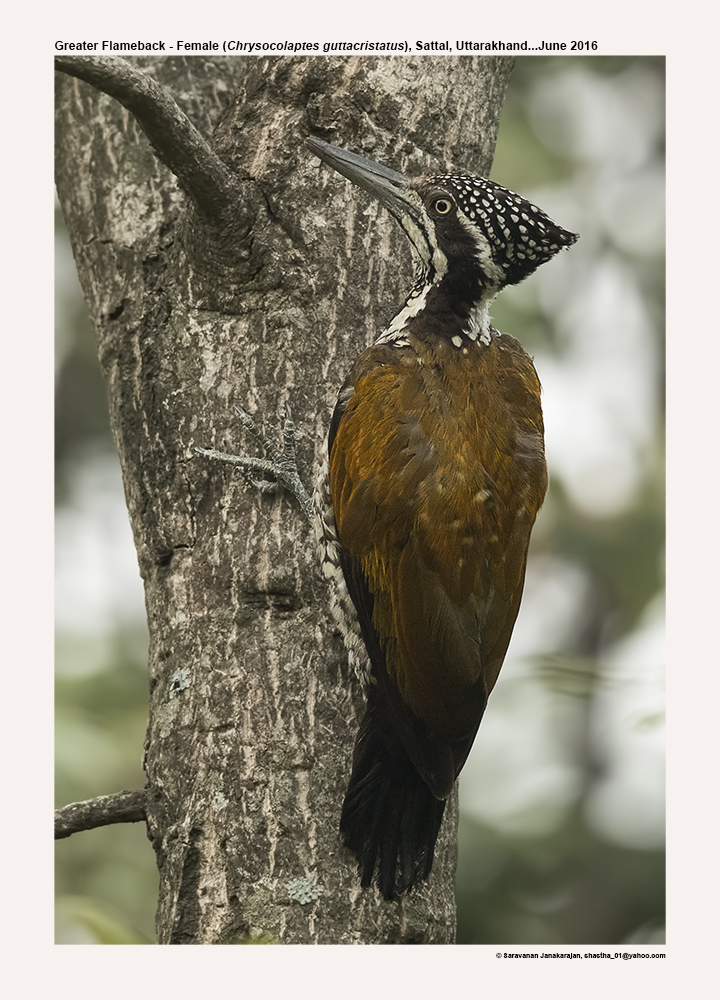Greater Flameback (Female)

Greater Goldenback Chrysocolaptes guttacristatus
Etymology:
- Chrysocolaptes : Greek word khrusos – gold; kolaptes – Chiseller
- Guttacristatus: Latin word gutta – spot ; cristatus –crested
Vernacular Names: Lepcha: Tashi-on-bau, Cachar: Daoja gadaiya, Guj: Kesaripeeth/ Lalipith soneri lakkad khod, Sinh: Mukalang kerella, Mar: Motha Sonpathi Sutar
Distribution in India: Resident of Himalayas and hills of India.
Description: Size of 30–34 cm; wt. of 150–233 g. The male has forehead, crown and crest as red, broad black and white bands on face; golden-olive or golden-green with some rufous tones on mantle to upper back and upperwing-coverts, bright crimson-red on lower back and rump. The flight-feathers are blackish, tail is black; underparts are white to buff-white with feathers edged and tipped black, black strongest on throat and breast, forming scaly pattern on latter. The underwing is brown with white spots; long, blackish, chisel-tipped bill, broad across nostrils, iris is pale creamy, orbital ring is purplish; legs are greyish to green-brown. The female has head pattern similar to males, but crest is black with white spotting. The juvenile is duller than adult, more olive-tinged above, more obscurely marked below, has brown eyes, male with less red in crest, female head much as adult’s.
Habitat: It is found in open deciduous and evergreen forest, secondary forest, riparian woodland in open country, old plantations. It is found from lowlands to 1800 m.
Food habits: It eats large caterpillars, larvae of wood-boring beetles, pupae, ants and other insects; also eats nectar and figs. It is found in pairs and in family parties; associates also with other woodpecker species. It forages on big trees and snags, including isolated ones in the open; prefers trunks and larger branches. Sometimes descends to ground. It pecks and hammers to excavate wood as a common foraging technique. Large pieces of bark are removed with powerful lateral blows, and probing for prey follows. Pecking and probing used also to uncover subsurface prey among epiphytes. Movements are rapid; tree searched from base of trunk to canopy, though much time is spent at a single site when substrate excavated. It gleans rarely; occasionally hawks aerial insects. It moves long distances, including over open areas, from one tree to the next.
Breeding habits: They breed in Mar–May in North India, Dec–Mar in South India and Dec in SE Asia. The nest-hole is excavated by both sexes. It takes 4 weeks to excavate a nest. The entrance hole of a nest is a vertical oval. They lay a clutch of 4–5 eggs. The incubation is done by both parents for a period of 14–15 days. The chicks are fed by both parents, which carry food in tip of the bill. The fledging period is 24–26 days. The young stay with parents for some more weeks after fledging.